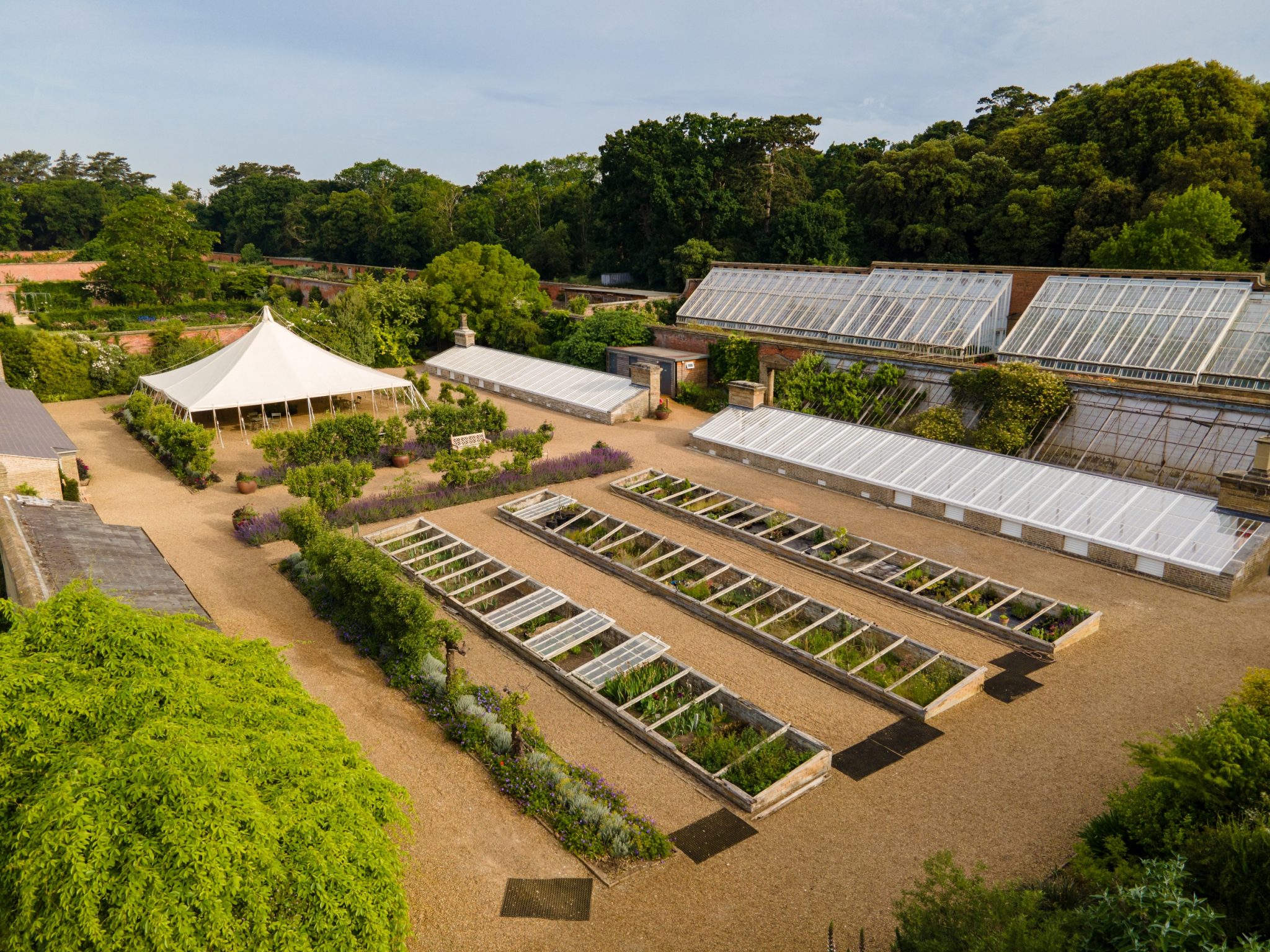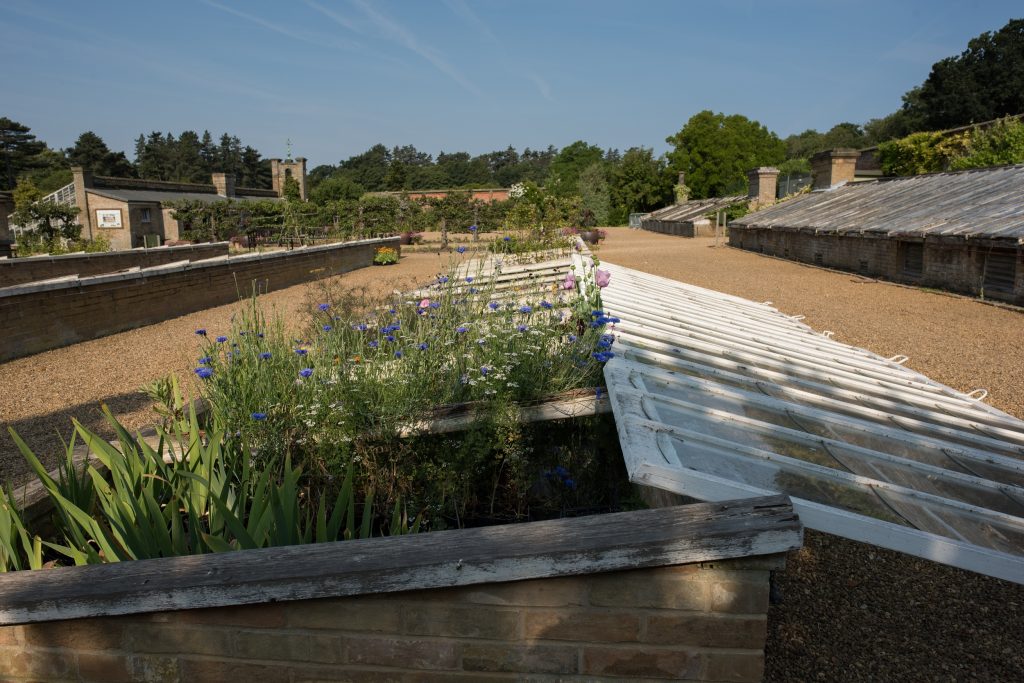
Historic properties
Sunken Pit Houses


One of Samuel Wyatt’s original features built in his brand new kitchen gardens in the 1780s, it is easy to wander past the sunken pit houses and not realise how innovative and important they were in their time. Unlike a free-standing glasshouse, which can cool very quickly from cold night air, the pit houses are sunk into the ground to regulate the surrounding temperature. In addition to this, during our restoration project in 2021 we were excited to find the base of a Georgian hot bed system under the floor in the east pit house, which would have been gently heated by manure or tanners bark. The pit houses were probably originally used to grow soft fruits such as melons, cucumbers and tomatoes, very rare commodities at the time, and the regulated, warmer temperature would mean a nice early crop. As technology progressed and tastes changed, a Victorian heating system was installed in the 1860s, using hot water pipes tunnelled underground from the boiler house in the Messenger building. The pit houses were not just used for fruits, we know that during the 19th century the west pit house was used to grow carnations.
The restoration of the pit houses, which is thanks to support from the Cultural Heritage Recovery Fund through Historic England, is nearing completion and we will unveil all in summer 2022. We are restoring the eastern pit house’s Georgian hotbed system as accurately to the original layout as possible and will use this to grow melons. The western pit house will be re-purposed as a productive display house.